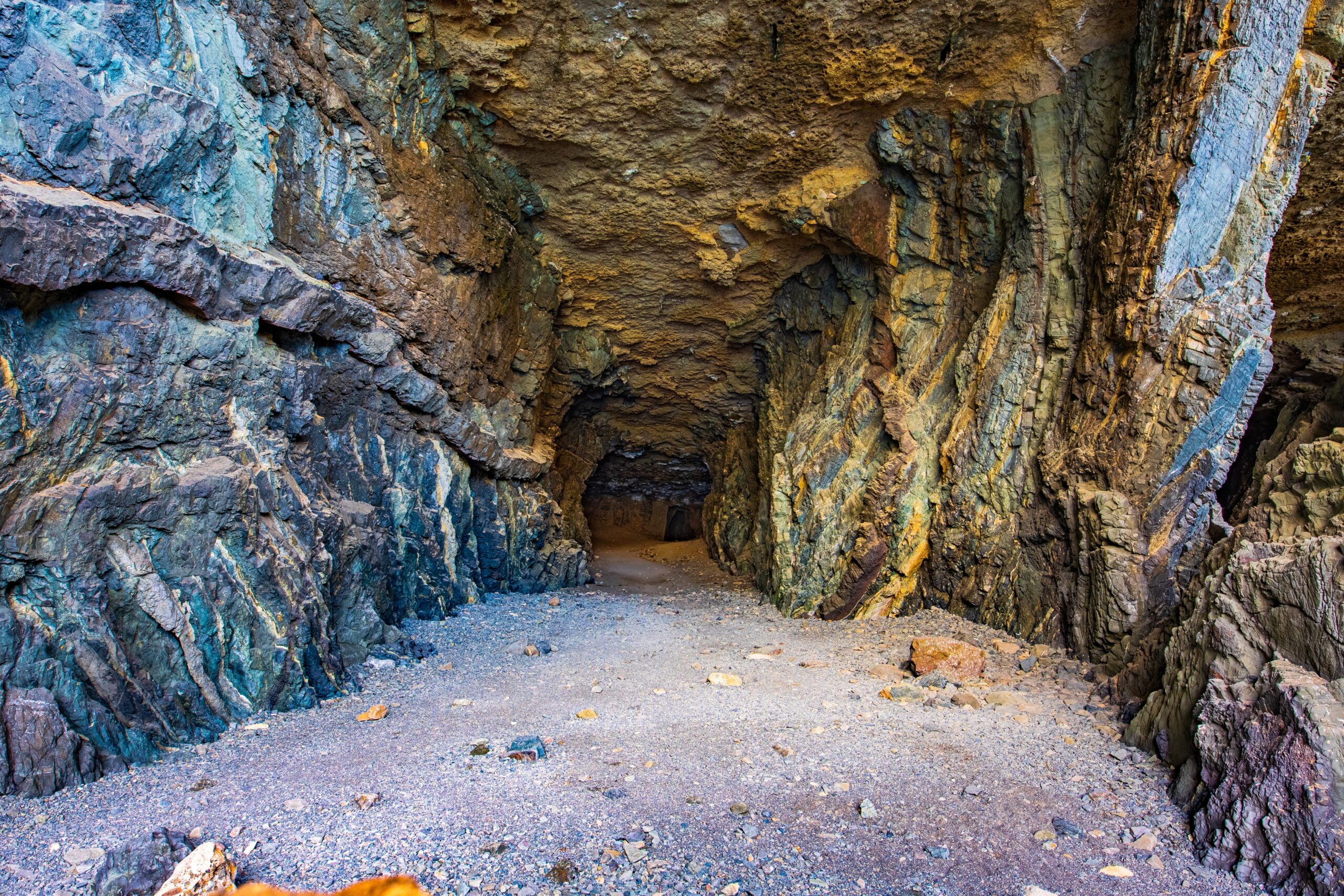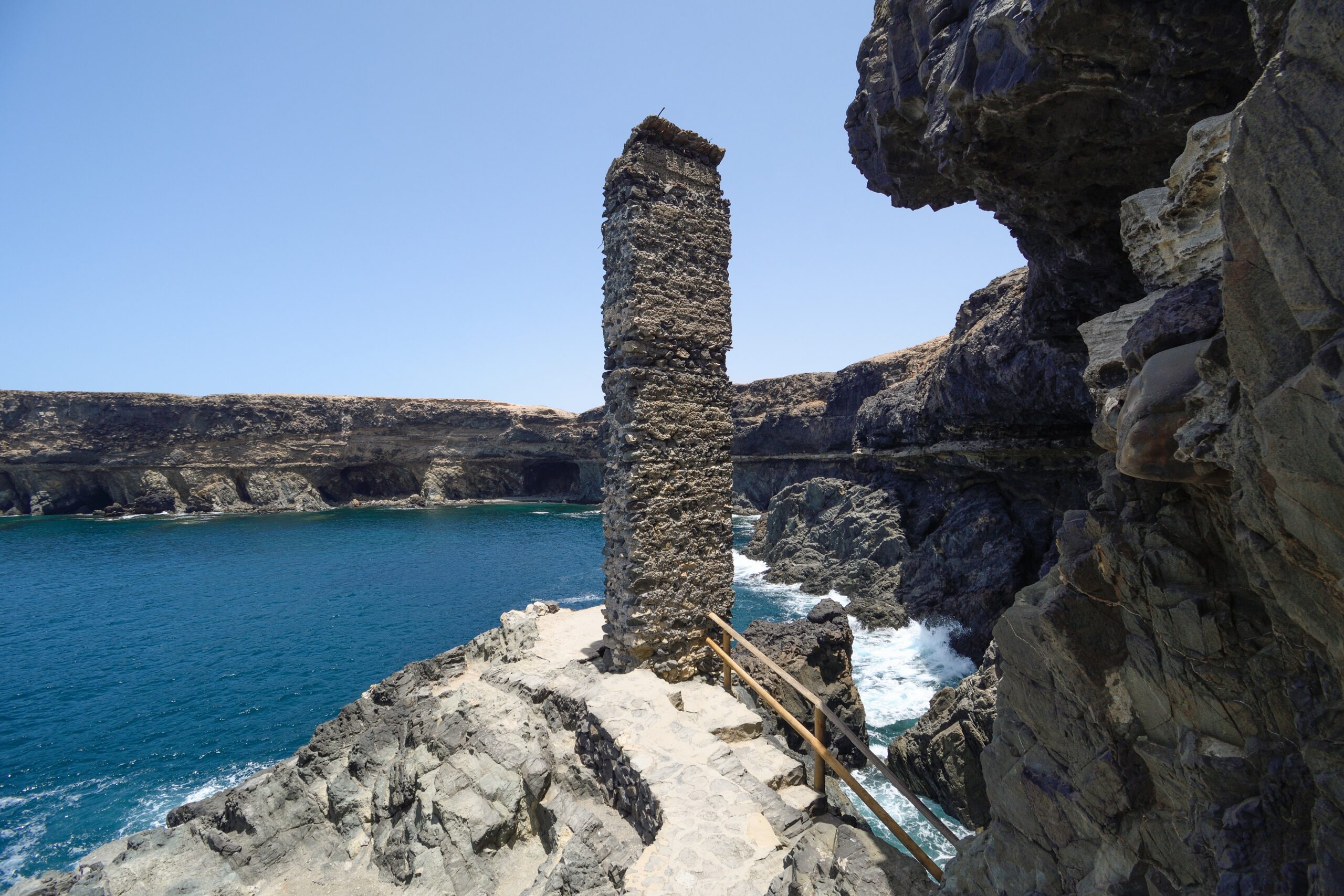Ajuy, also known as Puerto de la Peña, is a delightful fishing village adorned with charming whitewashed houses, inviting fresh fish eateries, and, importantly, it has preserved its authentic charm, avoiding excessive tourist development. A true gem, providing a glimpse into local life and a peaceful atmosphere that is increasingly rare to find.
Ajuy has fine volcanic sand and formidable waves. Unfortunately, it carries the haunting moniker, Playa de Los Muertos – Beach of the Dead – due to the historical occurrence of drowned individuals brought there by powerful sea currents.
While it may not immediately appear as the most scenic spot in Fuerteventura, there’s a unique charm to this place.
Oldest land in the Canary Islands
The Cuevas de Ajuy – Ajuy caves; are truly extraordinary. They hold significance as the oldest remnants of land in the Canary Islands and stand as the deepest caves in the region.
Their geological origins precede the formation of the island of Fuerteventura itself, making them authentic natural relics. Surprisingly, this fact remains relatively unknown to the general public, representing a missed opportunity.
These caves deserve greater recognition among visitors as a genuine geological wonder. Exploring rocks that are over 10,000 centuries old, emerging from depths of about 3,000 meters in the oceanic crust to rise above sea level, is a rare and unusual occurrence that shouldn’t be overlooked.
According to the International Union of Geological Sciences, the presence of various igneous and volcanic sediments has earned Ajuy a place among the 150 areas of exceptional geological significance worldwide. This distinction led to its designation as a Natural Monument. But that’s not all; it’s also steeped in history and legend. Many pirates who sailed these waters reportedly hid their treasure here. Moreover, in 1402, Ajuy was the strategic location chosen by Jean de Béthencourt for his invasion and conquest of the island, adding another layer of historical intrigue to this fascinating place.
Mirador de Ajuy
Embarking on the ascent towards the caves, you’ll encounter the Mirador de Ajuy – a perfect vantage point for capturing breathtaking photos of the beach and the expansive ocean. Immediately, you’ll be captivated by intriguing dunes sculpted by erosion, composed of marine gastropod fossils and oceanic sediments. With the right tide, witness the sea surging into the blowholes, forcefully expelling water in a thunderous spectacle.
Lime Kilns
The next noteworthy attraction includes two lime kilns integral to lime production, a crucial resource for whitewashing houses and a significant Majorero trade. Lime from these kilns was shipped to Gran Canaria and Tenerife from the adjacent pier, visible as you descend the stairs leading halfway to the caves. The remaining concrete beams served as supports for a ramp used to lower and load goods onto boats, providing splendid views of the cliffs.
Caves
Upon reaching the end of the path, you’ll find a staircase leading down to the caves. Stepping inside is akin to a journey back to a prehistoric era. The caves boast colossal dimensions, and with a flashlight in hand, you can venture into some of the tunnels, exploring to significant depths. After your exploration of these remarkable caves, it’s highly advised to stay and witness the renowned sunset. Seated on such ancient soil, you’ll likely experience the same feeling that the Mahos did centuries ago.




